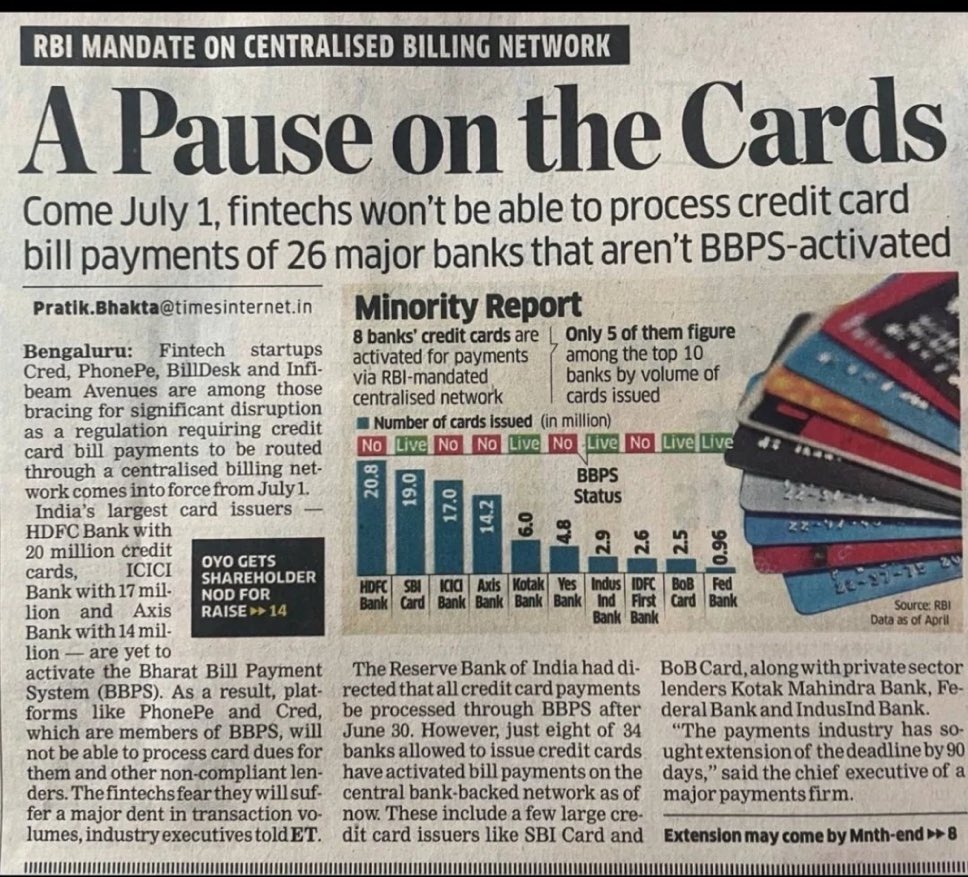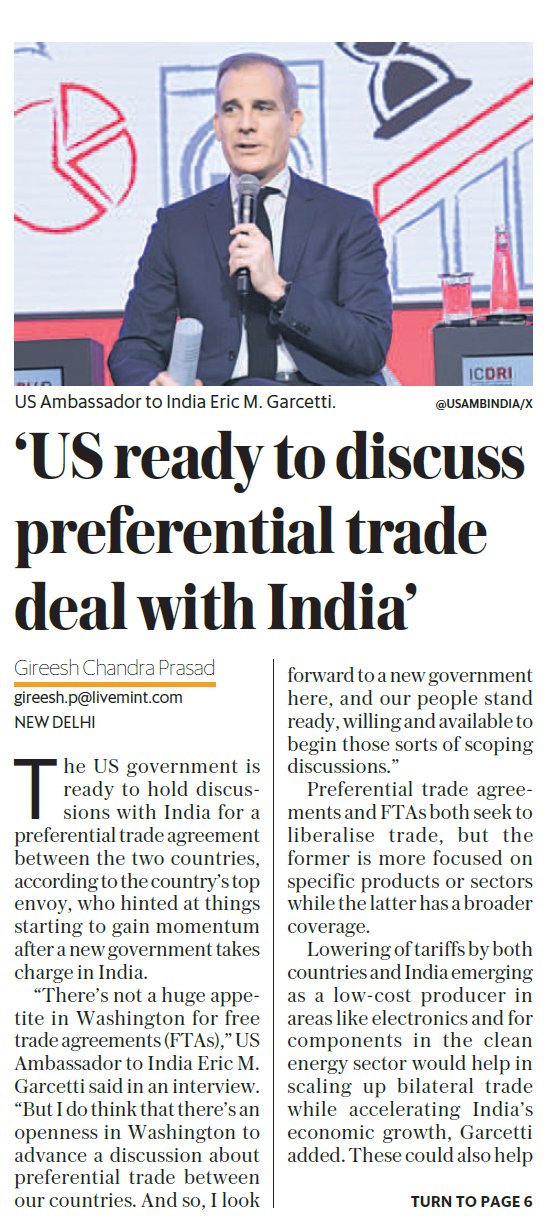Yogi_G wrote: ↑03 Jul 2024 12:26
are these bonds purchased in rupees or in USD? If in Rupees, signficant capital outflows would result in strengthening of the rupee. More companies will start allocating between 5-10% in the portfolios for India.
Here is a URL to go through first:
https://www.tbsnews.net/bloomberg-speci ... ent-886731
In more practical terms, the event means foreign investors will finally gain access to India's tightly-regulated $1.3 trillion government bond market....
In 2020, the Reserve Bank of India (RBI) opened a wide swath of its sovereign bond market to foreign investors.
JPMorgan added India to its watchlist for inclusion in the emerging market bond indexes in October 2021. But talks hit a stalemate due to New Delhi's reluctance to provide tax breaks to foreigners to trade on international platforms. What likely revived the matter was investors wanting diversification to compensate for China's economic woes and sanctions on Russia. India hasn't yielded to requests by foreign investors for tax breaks.
Of course everything eventually will be Rupee. International retail & institutional investors will invest in their local currencies, say USD, EUR or YEN which the trading financial firm will sell in Indian market and buy rupees to purchase the bond.
For this rupee stabilization is the key. A volatile rupee means most investors will shy away. For rupee to be stable, India's fiscal deficit, inflation and economy in general should be stable*
Here is how it works:
1. As a individual investor or as an institutional investment manager, you are looking at purchasing say emerging market bond fund or ETF. Examples are VEGBX or EMB or FNMIX (you can check it out on finance.yahoo.com /
https://fundresearch.fidelity.com/mutua ... 315910836 )
Individual investor means you either go directly to the investment firm like JPMC or Fidelity or ETrade or Robinhood, transfer money from your bank account and purchase the bond fund or ETF. Of course you can have SIP equivalents with your own bank or your buddy who smokes weed or the local desi chaiwallah who has the best dibs on which way the Indian economy is moving (in case of bonds) and smoke a joint or two and transfer your savings.
You see you are looking for a low-volatile, stable returns for your savings. Maybe you are retired and do not want to deal with vagaries of stock market. Emerging markets bond help you beat local inflation while offering you some safety compared to stock
2. As an institutional investor, for example you are running a senior home and they have you as their financial manager. That is you are registered "BRFite Chaiwallah Investment firm" and the retirees have deposited their meagre savings to you. Including their monthly pensions. You want to make sure that it is invested and has some returns. You are an institutional investor. You contact say the "Chaddiwallah Teachers Pension Fund", who manages pensions for the teachers in the state of say Alaska or for that matter pensions for the rail road employees in Argentina or in Japan or in iceland. You get the drift. Point is you have millions of what you want to invest. Wether in dollars, yen, eur or icelandic currencies.
Key here is, you do not want to or have werewithal to open office in India and do the analysis. So you either buy FNMIX or EMB or VEGBX (or a mixture of those funds) or approach other institutions who will curate the funds for you. If you are lazy, you will just buy EMB as an institutional investor and play golf.
Your investments are tracked against an emerging bond index. That is FNMIX or VEGBX is tracked against say JPM emerging bond index. It may show returns better or worse than the index, but if it shows worst, you will try to mirror the JPM index. Even if it does better, you will still try to mirror on what did better against the benchmark index.
Since you mirror the index, you will buy into the underlying bonds that constitute the fund. And that means more money flowing into India.
Here is a breakdown of FNMIX
Mexico 6.82% Indonesia 3.57% Hungary 1.85% Sri Lanka 1.15%
Saudi Arabia 4.27% Qatar 3.41% Angola 1.77% United Kingdom 1.10%
Brazil 4.27% South Africa 3.12% Ukraine 1.59% Paraguay 1.09%
Venezuela 4.25% Chile 3.01% Romania 1.47% Other Countries 16.63%
United States 4.10% Nigeria 2.90% Ecuador 1.37% Cash & Net Other Assets 2.05%
United Arab Emirates 3.90% Egypt 2.90% Costa Rica 1.31%
Turkey 3.85% Panama 2.66% Peru 1.28%
Colombia 3.73% Argentina 2.32% Pakistan 1.18%
Dominican Republic 3.60% Oman 2.31% Guatemala 1.17%
What does that do for the Indian government? Indian government can float bullet train project from madurai to chennai and ahmedabad to delhi and issue bonds to finance it. It does not have to borrow from Bank of Baroda or SBI. Or even LIC or whatever pension plan Indians have that regularly bail out Indian government. The banks now have additional capital which can now fund expansion of say Adani enterprises or your national-pakodawalla franchise.
And for reference from above URLs
For global investors, Indian bonds offer access to a high-growth, high-yield market. According to JPMorgan, the securities have beaten their index counterparts over the past decade. Additionally, the rupee is among the least volatile emerging market currencies, which has enhanced the nation's appeal.
Since JPMorgan's September announcement, more than $10 billion has flowed into local bonds, with global funds such as BlackRock and Abrdn investing ahead of the actual inclusion. Morgan Stanley estimates that 3.6% of the total assets tracking the index are already deployed in India, reflecting a rush to gain exposure despite the elaborate documentation needed to set up onshore.
* Pappu is evil. With his Khatakat schemes, he & CONgoon wants to destabilize the Indian economy. The net result will be that foreign investment will reduce and India will find it difficult to raise capital for its growth. If you are still supporting Pappu, CONgoons or any of the dynastic parties that support CONgoons for various reasons, then you deserve nothing but hell.



